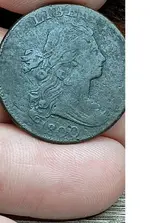- Aug 19, 2014
- 38,570
- 141,156
- Detector(s) used
- JW 8X-ML X2-VP 585
- Primary Interest:
- All Treasure Hunting
Yes... I too occasionally need some help on I.D's etc... :P
Any help / knowledge on this rare samurai wakizashi would help.
May even have been a "polearm" at one time... not sure.
Thanks in advance.
Oriental items are not my strongpoint... Especially the language.
My eyes begin to play tricks on me.
Writing meaning / what it says... AND a value is the target here.
Any help / knowledge on this rare samurai wakizashi would help.
May even have been a "polearm" at one time... not sure.
Thanks in advance.
Oriental items are not my strongpoint... Especially the language.
My eyes begin to play tricks on me.

Writing meaning / what it says... AND a value is the target here.
Amazon Forum Fav 👍
Last edited:









